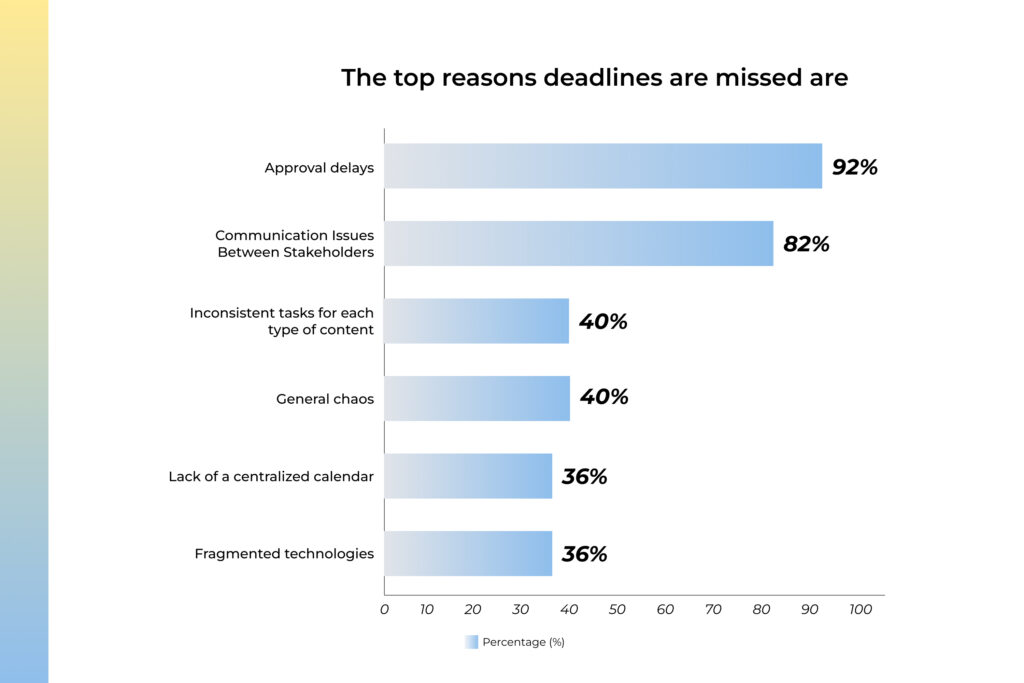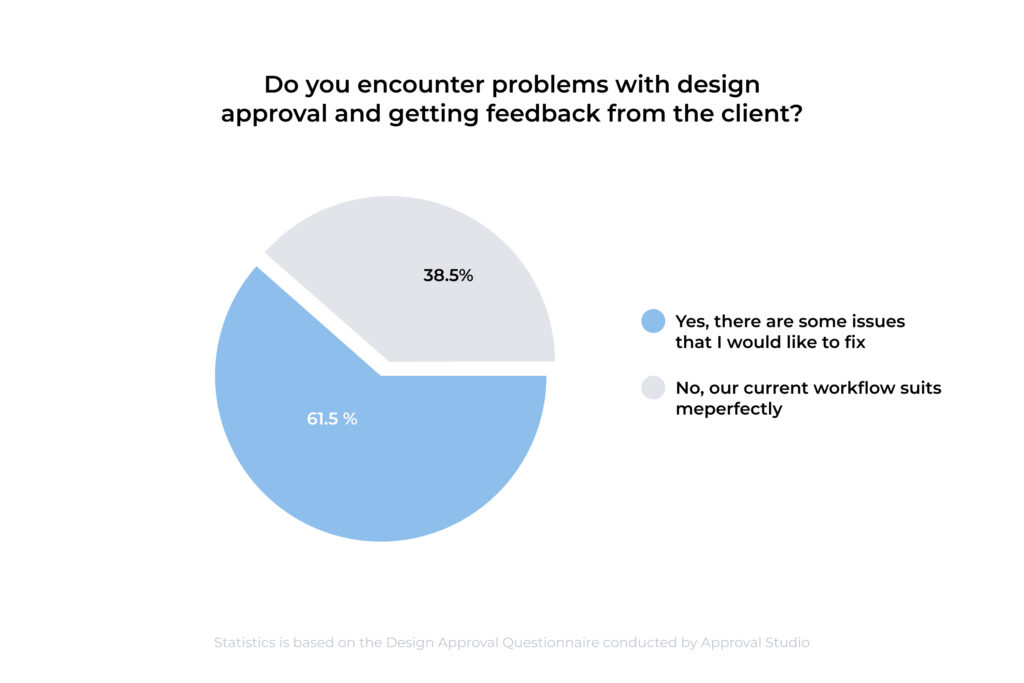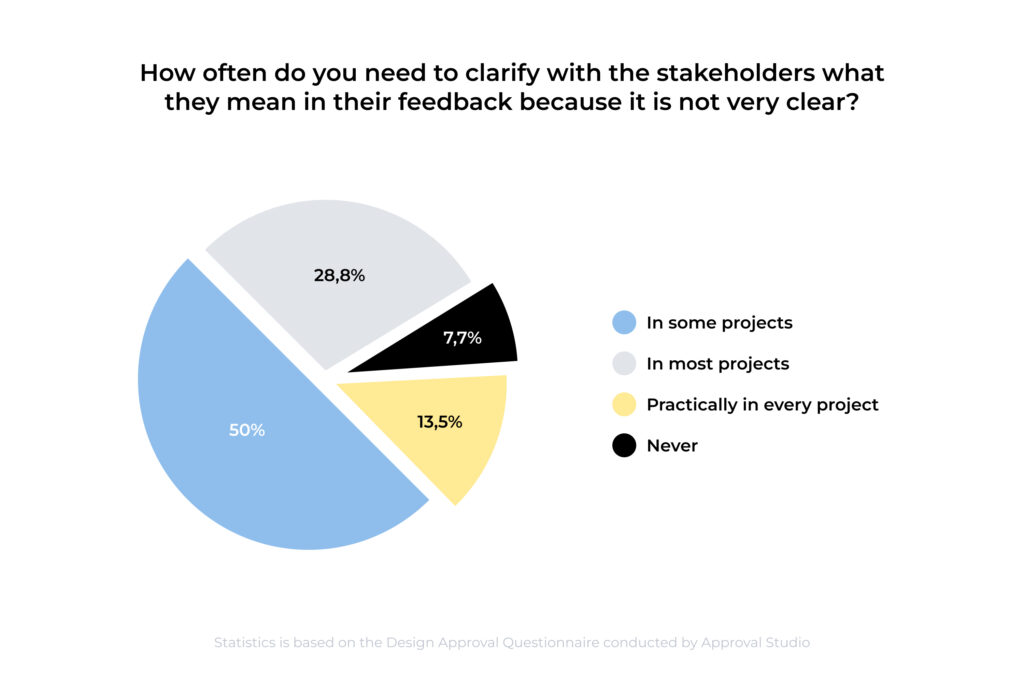So, graphic design is a sphere that has become an irreplaceable part of any business. I mean, look around, and you’ll find that almost every single object has been some graphic designer’s task one day. Furthermore, everything you see online was, in fact, designed by a specific person somewhere in the world.
However, it’s not only about how much we see but also about what we see. Certain cosmetic package design choices may stop you from buying the product. The same may happen with magazines, architecture designs, websites, etc. Did you know that according to a study, “Trust and mistrust of online health sites“, carried out by scientists from Northumbria and Sussex University, 94% of users will reject a website because of the poor design?
And being such a necessary process, design has many completion stages, with each more dreadful than the other. However, the design process is not something you should be afraid of, even considering all the difficulties that come up in the process. What you should do is be prepared and know all the risks connected with the job. And we, being approval experts, will talk about interesting approval statistics that can help in averting as many of those problems as possible.
Table of contents:
Approval Statistics
Proofing an artwork is the part that almost every designer dreads as it is essentially criticism, and not everyone takes it well. We are all people, and it may be difficult to communicate your ideas properly, or even understand your client. Especially, if you are using a medium that does not work well and statistically causes many difficulties.

Of course, hypothetically there is not one right way to proof your artworks. Everyone is different, and each person has their tips and tricks on tackling this part of an asset design process. However, over time, some ways have been proven better than others, and some things came out to be worse than we could have expected. So, without further ado, let me present you with some surprising design approval stats that made me go, “Wait, really?”
However, before we continue on that topic, let me recommend Approval Studio as one of those proven design review ways. It has an intuitive interface and the ability to share the design with anyone using external review to annotate the artwork without needing to log in. There is no need to struggle through a multi-step review process (with countless emails, versions all over the place, and missed deadlines) if a tool can eliminate all that in one go, and enjoy the process. Book a demo to learn about more features!
Cost of missed deadlines
Gleanster and Kapost created an online survey in 2015, which studied how inefficient marketing influences company losses. And what they found was mind-blowing. Did you know that 958 million dollars go to waste every year because of an ineffective content creation process? And the biggest reason for that was, of course, missed deadlines. However, the researchers did not stop there and decided to find out the main reasons why the deadlines were missed.
And, of course, some mentioned communication issues that arose during the process, lack of a centralized calendar, inconsistent tasks and general chaos. However, the biggest reason for missed deadlines 92% of people mentioned was Approval Delays. Whatever lies behind it (lack of a sense of responsibility, inefficiency of the software, lack of the software, forgetfulness) does not negate the fact that this is one of the biggest causes of money loss. And if you are facing similar obstacles, it’s time to rethink your workflow.

Email proofing
So what should you use then? Well, the first obvious choice that you may think about is email proofing. In our research, we have found that 70% of people use email proofing as their primary communication medium. However, is it really that good? Spoiler: it is not. While email proofing may seem like the most reliable way to proof any project, it can become the total opposite. Well you see, working with email can be messy, time-consuming, and tiring. We’ve written about this in one of the earlier articles, so if you are interested, take a look at it.

Wasted time
However, that was only one of many dreadful things emails bring. McKinsey Global Institute once decided to do a little research on productivity in the workplace. What they found was…surprising, to say the least. Initially, they thought that using technologies would positively affect all workers and their productivity as, well, technology often equals efficiency. However, this is not the case when it comes to email management.
Did you know workers spend 28% of their workweek just reading and answering emails? Then you add 19% of the time they spend searching and gathering all useful information. Then, there is 14% of the time spent on communication with colleagues. This leaves us with only 39% of the role-specific tasks they were hired for. This is wild as it means that if you have a 40-hour week, you spend merely 15.6 hours a week really doing your job. Imagine what losses in funds that can lead to.

Lost feedback/information
I hope you are not feeling too overwhelmed by the previous statistics because we have another mind-blowing one to discuss. Losing time is one of the things an overcomplicated approval process may bring. Our study has found that almost 83% of people have lost feedback or any other significant project information using their preferred method of communication. Of course, we should not jump to conclusions, saying that people only lose info via email. However, as you remember, 65% of the same people use it as the main approval tool.
The conclusion is obvious — more than half of these respondents must have lost information while using email as their preferred proofing method. And it is really difficult to blame people as keeping track of all the information using email is a horrendous task. However, in business, any info loss is detrimental to the project’s workflow. If this problem ever occurs, the only sensible thing to do would be to rethink the workflow.

Communication issues
Another giant obstacle that arises when email proofing comes into play is getting specific information from the client. I know this type of approval workflow is not the only one where this problem can be encountered. Nevertheless, 62% of designers needed help with design approval and getting feedback from the client. This number was another surprise, as you tend to think that design briefs exist for a reason. However, this makes it look like people cannot communicate well with their coworkers, customers, and employees in the field where communication is the key to ensuring timely execution.

Hem and haw
Another surprising thing was found in our research. Did you know that an enormous 92% of people had to clarify with stakeholders to different degrees what they meant in their feedback? 13.5% of people had to do that in almost every project, around 29% encountered that in most projects, and 50% had this problem only in some projects.
Of course, miscommunication is an everyday problem, and we cannot eliminate it completely. However, in the design approval process, we must do that as much as we can to ensure a seamless workflow and clarity of feedback as it defines all further steps that we take on the project. And, of course, it is much easier to do using a proofing tool rather than email. The most detailed way you can go while using email is to take a screenshot and annotate it, write instructions in the following email, or call. However, this way is overcomplicated and adds to the overall confusion.

The graphic design team’s biggest challenge
Considering the above, the next stat will probably be quite expected. We’ve talked so much about how difficult it is to approve an artwork, especially in the way most do it – by email. And according to Piktochart, many businesses feel the same way. For them, a design that has to go through too many approval process steps is the biggest pain point in the whole design approval workflow. The lengthy procedure and the red tape connected to it undeniably work against the designers and their customers.
However, it does not have to be like that. Maybe you have found an efficient way to proof your artwork via email, and I envy you for this creativity. However, this is not always the case, and people are stuck with this indispensable but painful part on their own.

Final thoughts
So, it is time for the final check-in. I want you to sit down and reflect on all the things you’ve just read. However, you should not focus only on how terrible things may be. Rather, make sure to comprehend this extensive room for growth. Maybe (hopefully) this will make you understand all the drawbacks of your current design approval process and change it for the better. It is supposed to be an enjoyable part of your work that you view as something you can get an outside point of view from. So, evolve and make the best of your approval process, and we will be sure to help in any way we can!

 TEAM SOLUTIONS
TEAM SOLUTIONS WORKFLOW SOLUTIONS
WORKFLOW SOLUTIONS



 REVIEW TOOL
REVIEW TOOL PROJECT MANAGEMENT
PROJECT MANAGEMENT TOOLS & INTEGRATIONS
TOOLS & INTEGRATIONS
 CLIENT INTERVIEWS
CLIENT INTERVIEWS









